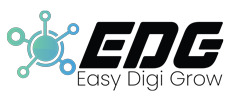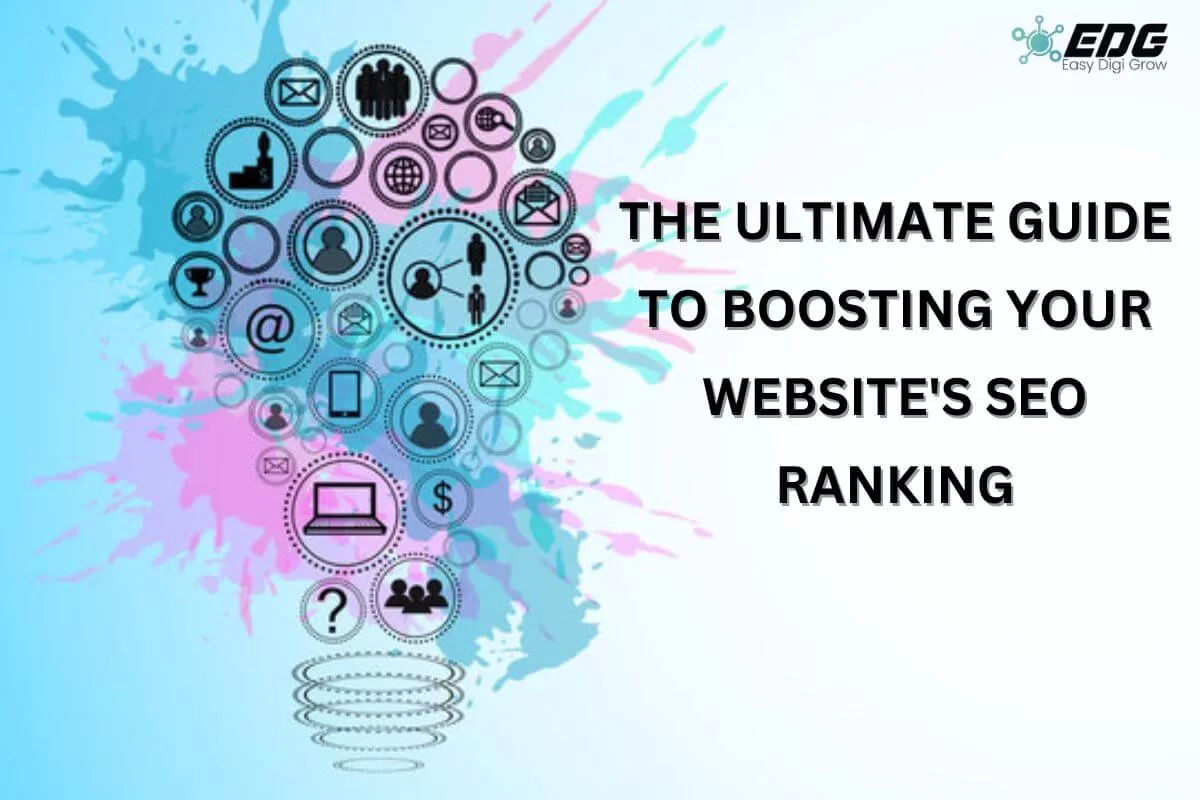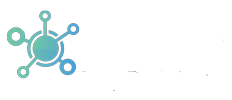In today’s digital age, having a strong online presence is crucial for the success of any business. One of the key elements of a successful online presence is a high search engine ranking. Search Engine Optimization (SEO) plays a vital role in improving your website’s visibility and attracting organic traffic. In this comprehensive guide, we will provide you with valuable tips, strategies, and best practices for boosting your website’s SEO ranking. We will cover both on-page and off-page optimization techniques, keyword research tips, and ways to enhance website performance.
What are the fundamental concepts and key components of SEO (Search Engine Optimization)?
SEO (Search Engine Optimization) is the practice of optimizing a website to improve its visibility and ranking in search engine results pages (SERPs). It involves various strategies and techniques aimed at enhancing the website’s relevance, authority, and user experience to attract organic (non-paid) traffic from search engines. Before diving into the strategies, it’s essential to understand the core concepts of SEO. Here are some key fundamentals:
Types of SEO:
- On-Page SEO: Optimizing individual web pages to improve their visibility in search engine results. This includes optimizing content, meta tags, headings, URL structure, and internal linking.
- Off-Page SEO: Building external signals and backlinks to improve a website’s authority and reputation. This involves techniques like link building, social media promotion, influencer outreach, and online reputation management.
- Technical SEO: Optimizing website infrastructure and technical elements to enhance crawling, indexing, and user experience. This includes website speed optimization, mobile responsiveness, XML sitemaps, canonicalization, and structured data markup.
- Local SEO: Optimizing a website to appear in local search results. Local SEO strategies include optimizing the Google My Business profile, local citations, online reviews, and location-specific keywords.
SEO Process:
- Keyword Research: Identify relevant keywords and search terms that align with the website’s content and target audience.
- On-Page Optimization: Optimize website elements like titles, headings, meta tags, and content with target keywords, ensuring relevancy and readability.
- Technical Optimization: Improve website structure, navigation, URL structure, page load speed, and mobile-friendliness, and ensure proper indexing by search engines.
- Content Creation: Develop high-quality, informative, and engaging content incorporating target keywords to attract and satisfy user intent.
- Link Building: Acquire high-quality backlinks from reputable websites through outreach, content promotion, guest posting, and social sharing.
- Local SEO Optimization: Optimize for local search by claiming and optimizing Google My Business listing, obtaining local citations, and encouraging customer reviews.
- Monitoring and Analytics: Use tools like Google Analytics to track website performance, monitor rankings, traffic, and user behavior, and make data-driven decisions.
- Continuous Optimization: Regularly review and update SEO strategies, monitor search engine algorithm changes, perform website audits, and adapt to evolving trends and user preferences.
- Reporting and Analysis: Generate SEO reports, analyze key metrics, and evaluate the effectiveness of SEO efforts to make informed decisions for further optimization.
- Ongoing Maintenance: Maintain regular website updates, monitor for technical issues, track performance, and stay updated with SEO best practices and industry trends
- Keywords: Keyword research involves identifying and analyzing the specific search terms and phrases that users enter into search engines. It helps in understanding user intent and targeting relevant keywords to optimize website content. Identify relevant keywords that reflect your website’s content and are frequently searched by your target audience.
- On-page Optimization: On-page SEO services focus on optimizing individual web pages to improve their visibility and relevance to search engines. This includes optimizing meta tags, headings, content, URL structures, and internal linking.
- Off-Page Optimization: Off-page SEO services refers to activities conducted outside the website to improve its visibility and reputation. This includes building high-quality backlinks, social media engagement, online directory submissions, and managing online reputation.
- Technical SEO: Technical SEO involves optimizing the technical aspects of a website to ensure it is easily accessible to search engines. It includes optimizing website speed, mobile-friendliness, site structure, URL canonicalization, XML sitemaps, and robots.txt files.
- Content Creation: Creating high-quality, relevant, and valuable content is crucial for SEO. Content should align with user intent, incorporate targeted keywords, and provide a positive user experience. This includes blog posts, articles, videos, infographics, and other forms of engaging content.
- User Experience (UX): Providing a positive user experience is essential for SEO. This includes ensuring fast page loading times, mobile responsiveness, intuitive navigation, clear call-to-actions, and user-friendly design.
- Analytics and Reporting: Tracking and analyzing website data using tools like Google Analytics help to measure the effectiveness of SEO efforts. Monitoring metrics such as organic traffic, keyword rankings, bounce rates, and conversion rates provide insights for making informed optimizations.
- Local SEO: For businesses targeting local customers, local SEO strategies are vital. This involves optimizing for location-specific keywords, creating and optimizing Google My Business listings, managing online reviews, and getting listed in local directories.
- SEO Best Practices: Following industry best practices and staying updated with algorithm changes and search engine guidelines is crucial for successful SEO. This includes adhering to ethical practices, avoiding black hat techniques, and focusing on providing value to users.
SEO fundamentals revolve around optimizing website content, structure, and visibility to improve rankings and attract organic traffic from search engines. It requires a combination of technical expertise, strategic planning, and ongoing optimization efforts.
How to enhance your keyword research process that will further help you in boosting your website’s SEO Ranking?
Keyword research is a crucial step in developing an effective SEO strategy. It helps you understand the language your target audience uses when searching for information, products, or services online. Here are some valuable tips to enhance your keyword research process:
- Understand Your Target Audience: Start by gaining a deep understanding of your target audience. Identify their demographics, interests, pain points, and search behavior. This will help you create a more accurate keyword list that resonates with your audience.
- Brainstorm Seed Keywords: Begin by brainstorming a list of seed keywords that are directly related to your business, industry, or niche. These are general terms that are relevant to your offerings. For example, if you run a fitness blog, seed keywords could include “weight loss,” “fitness tips,” or “healthy recipes.”
- Utilize Keyword Research Tools: Take advantage of keyword research tools such as Google Keyword Planner, SEMrush, Moz Keyword Explorer, or Ahrefs. These tools provide valuable insights into search volume, competition, and related keywords. They can also suggest alternative keyword ideas based on your seed keywords.
- Long-Tail Keywords: Focus on long-tail keywords, which are longer and more specific phrases. Long-tail keywords typically have lower search volume but higher conversion rates. For example, instead of targeting the broad keyword “fitness,” consider using “best exercises for weight loss” or “healthy meal plans for beginners.”
- Analyze Competitor Keywords: Conduct competitor analysis to identify the keywords your competitors are targeting. Tools like SEMrush or Ahrefs can help you discover the keywords driving organic traffic to their websites. Analyze their strategies and find opportunities to differentiate and outrank them.
- Consider Search Intent: Understand the intent behind different search queries. Are users looking for information, trying to make a purchase, or seeking a specific solution? Align your keywords with the search intent to ensure your content meets the user’s needs. For example, if the intent is transactional, focus on keywords like “buy,” “discount,” or “best price.”
- Refine and Prioritize: Review and refine your keyword list based on search volume, competition, and relevance. Prioritize keywords that have a good balance of search volume and lower competition. It’s essential to strike a balance between highly competitive keywords and those with a higher chance of ranking.
- Monitor and Update: Keyword research is an ongoing process. Keep track of your keyword performance and make adjustments as needed. Stay updated with industry trends and changes in search behavior to ensure your keyword strategy remains effective.
Keyword research is not just about finding high-volume keywords. It’s about understanding your audience, and their needs, and delivering relevant content. By following these tips and continuously refining your keyword strategy, you can drive targeted organic traffic to your website and improve your SEO rankings.
What is on-page optimization and what are key techniques used for optimizing on-page elements of a website to boost your SEO ranking?
On-page optimization
On-page optimization refers to the practices and techniques implemented directly on your website to improve its search engine rankings and enhance the user experience. These techniques focus on optimizing various elements of your web pages to make them more relevant, user-friendly, and accessible to search engines. Here are some key on-page optimization techniques:
Keyword Research and Optimization:
- Conduct thorough keyword research to identify relevant keywords for your web pages. Consider the search volume, competition, and relevance of keywords. Use tools like Google Keyword Planner, SEMrush, or Moz Keyword Explorer.
- Place keywords strategically in your page titles, Meta descriptions, headings, URL structures, and within the content.
- Ensure that keyword usage feels natural and does not compromise the readability or user experience.
Quality and Relevant Content:
- Create high-quality, unique, and valuable content that aligns with the intent of the target keywords.
- Write informative and engaging content that satisfies the needs of your target audience.
- Use subheadings (H1, H2, etc.) to structure your content and make it more readable.
- Incorporate multimedia elements such as images, videos, or infographics to enhance the visual appeal and engagement of your content.
Meta Tags Optimization:
- Optimize your Meta tags, including the title tag, header tags, and Meta description by incorporating your target keywords naturally.
- Make sure the title tag accurately reflects the content of the page and includes relevant keywords.
- Craft compelling Meta descriptions that entice users to click through to your website from the search engine results pages (SERPs).
URL Structure:
- Use a search engine (SEO)-friendly URLs that are concise, descriptive, and include relevant keywords.
- Avoid dynamically generated URLs with unnecessary parameters or numbers.
- Separate words in the URL with hyphens (-) for better readability.
Heading Tags:
- Use heading tags (H1, H2, H3, etc.) to structure your content and highlight key sections or subtopics.
- Ensure that your main heading (H1) accurately represents the topic of the page and includes relevant keywords.
- Use subheadings (H2, H3) to organize the content hierarchy and make it easier for users and search engines to understand the page structure.
Image Optimization:
- Optimize images by compressing them to reduce file size without compromising quality.
- Use descriptive file names for images, including relevant keywords.
- Add alt text to images, providing a concise and descriptive alternative text that describes the image’s content.
Internal Linking:
- Incorporate internal links within your content to guide users to related pages or resources on your website.
- Use relevant anchor text for internal links that include keywords or describe the linked page’s content.
- Internal linking helps search engines discover and understand the structure and hierarchy of your website.
Mobile-Friendly Design:
- Ensure your website is responsive and mobile-friendly to provide a seamless user experience across devices.
- Optimize your design and layout to adapt to different screen sizes and resolutions.
- Test your website’s mobile-friendliness using tools like Google’s Mobile-Friendly Test.
Page Loading Speed:
- Optimize your website’s loading speed to provide a better user experience and improve search engine rankings.
- Compress images, minify CSS and JavaScript files, and enable browser caching.
- Utilize content delivery networks (CDNs) to deliver your website’s content from servers closer to the user’s location.
Schema Markup:
- Implement schema markup to provide search engines with additional context and structured data about your website’s content.
- Schema markup can enhance search engine results with rich snippets, such as star ratings, reviews, and event information.
User Experience (UX):
- Prioritize user experience by designing intuitive navigation, easy-to-use menus, and clear calls to action.
- Ensure fast and seamless website navigation and minimize user frustration.
- Optimize your website for readability, legibility
What is off-page optimization in SEO and what are effective strategies used for improving a website’s off-page presence?
Off-page optimization
Off-page optimization refers to activities conducted outside of your website to improve its search engine rankings and increase its online visibility. These strategies focus on building a strong online reputation, increasing website authority, and acquiring high-quality backlinks. Here are some essential off-page optimization strategies:
- Link Building: Link building is the process of acquiring backlinks from other websites to your own. Backlinks are considered votes of confidence from other websites, indicating the value and relevance of your content. Here are some effective link-building techniques:
- Guest Blogging: Write high-quality guest posts for relevant and authoritative websites in your industry. Include a link back to your website in the author bio or within the content.
- Influencer Outreach: Collaborate with influencers or industry experts to create valuable content that links back to your website. This can include interviews, expert roundups, or joint content creation.
- Broken Link Building: Identify broken links on relevant websites and offer your own content as a replacement. This involves reaching out to website owners and suggesting your content as a suitable alternative.
- Content Promotion: Create exceptional content that others naturally want to link to. Promote your content through social media, email outreach, and online communities to increase its visibility and chances of earning backlinks.
- Social Media Engagement: Active participation on social media platforms can enhance your website’s visibility and attract more visitors. Here’s how you can leverage social media for off-page optimization:
- Share Valuable Content: Regularly share your website’s content on social media platforms to increase its reach. Encourage social sharing by adding social sharing buttons to your website.
- Engage with Your Audience: Interact with your followers, respond to comments and messages, and participate in relevant discussions. This helps build a community around your brand and establishes credibility.
- Influencer Marketing: Collaborate with influencers in your industry to promote your content or products/services. Influencers have a large following and can help amplify your brand’s reach.
- Online Directories and Listings: Submit your website to reputable online directories and listings relevant to your industry or location. This helps improve your website’s visibility and can drive targeted traffic to your site. Ensure that your business name, address, and contact information (NAP) are consistent across different directories.
- Online Reputation Management: Maintaining a positive online reputation is crucial for off-page optimization. A positive reputation can lead to increased trust and visibility. Here’s how you can manage your online reputation effectively:
- Monitor Online Reviews: Regularly monitor and respond to online reviews on platforms such as Google My Business, Yelp, or industry-specific review sites. Address any negative feedback promptly and professionally.
- Encourage Customer Reviews: Actively encourage satisfied customers to leave reviews and testimonials about their experience with your business. Positive reviews can enhance your reputation and attract more customers.
- Online PR and Brand Mentions: Seek opportunities to get featured on reputable websites or publications related to your industry. This can be through press releases, interviews, or industry news articles. Brand mentions without backlinks can still contribute to your website’s visibility and reputation.
- Influencer Marketing: Collaborating with influencers in your industry can help increase brand awareness, drive traffic to your website, and improve your off-page optimization efforts. Identify influencers with an engaged audience relevant to your niche and establish partnerships that mutually benefit both parties.
Off-page optimization is an ongoing process. Consistently monitor and analyze your backlink profile, social media engagement, and online reputation to make necessary adjustments and ensure the effectiveness of your off-page optimization strategies.
How to Enhance Website Performance?
Enhancing website performance is essential for improving user experience, reducing bounce rates, and boosting search engine rankings. Here are some effective strategies to enhance your website’s performance:
Optimize Page Speed:
- Minimize file sizes: Compress images, CSS, and JavaScript files to reduce their sizes without compromising quality. Use tools like Kraken.io or TinyPNG for image compression.
- Enable browser caching: Leverage browser caching to store static resources locally, reducing the need for repeated downloads.
- Use Content Delivery Networks (CDNs): CDNs distribute your website’s content across multiple servers worldwide, delivering it to users from the nearest server. This reduces latency and improves page load times.
- Enable Gzip Compression: Gzip compression reduces the file size of your website’s resources (HTML, CSS, JavaScript) before they are sent to the browser. This significantly reduces load times and bandwidth usage.
- Minify CSS and JavaScript: Remove unnecessary characters, white spaces, and comments from your CSS and JavaScript files to reduce their file sizes. This improves loading speed, especially for mobile users.
- Optimize Images: Optimize images for the web by resizing them to the appropriate dimensions and compressing them without losing visual quality. Use the appropriate image formats (JPEG, PNG, or WebP) based on the content and transparency requirements.
- Implement Lazy Loading: Lazy loading delays the loading of non-critical resources, such as images or videos, until they are about to enter the user’s viewport. This approach reduces initial page load times and improves perceived performance.
- Use a Content Delivery Network (CDN): CDNs store cached versions of your website’s static files (images, CSS, JavaScript) on servers located in different geographic regions. This enables faster delivery of content to users, regardless of their location.
- Optimize Database and Code: Regularly optimize your website’s database by removing unnecessary data, optimizing queries, and ensuring efficient indexing. Optimize your code by eliminating unused scripts, plugins, or code snippets.
- Implement Browser Caching: Leverage browser caching by setting appropriate cache headers for your static resources. This allows returning visitors to load your website faster by storing some resources locally.
- Reduce Redirects: Minimize the use of redirects as each redirect adds an additional round trip to the server, increasing load times. Redirects should be used sparingly and only when necessary.
- Enable Compression: Enable server-level compression (e.g., Gzip) to compress your website’s resources before transmitting them to the user’s browser. This reduces the amount of data transferred and speeds up page loading.
- Monitor and Optimize Website Performance: Regularly monitor your website’s performance using tools like Google PageSpeed Insights, GTmetrix, or Pingdom. Identify areas of improvement and make necessary optimizations based on the recommendations provided.
By implementing these strategies during your website design process, you can significantly enhance your website’s performance, resulting in faster load times, improved user experience, and better SEO rankings. Remember to regularly assess and optimize your website to keep up with evolving performance standards.
Tip of the day: Valuable tips for conducting effective keyword research
Keyword research is the foundation of successful SEO. Here are some valuable tips to enhance your keyword research process:
- Long-Tail Keywords: Focus on long-tail keywords (phrases containing three or more words) as they have less competition and higher conversion potential.
- Competitor Analysis: Analyze the keywords your competitors are targeting. Identify untapped keyword opportunities and develop a strategy to outrank them.
- User Intent: Understand the intent behind different search queries. Identify whether users are seeking information, looking to make a purchase, or comparing products/services. Tailor your content accordingly.
- Keyword Variations: Expand your keyword list by including variations, synonyms, and related terms. This helps capture a broader range of search queries.
Frequently Asked Questions (FAQs)
Q1: Is it necessary to regularly update my website’s content?
A1: Regularly updating your website’s content can have a positive impact on SEO rankings. Fresh and relevant content signals to search engines that your website is active and provides up-to-date information, which can improve its visibility in search results.
Q2: How important is website speed for SEO?
A2: Website speed is crucial for SEO. Search engines prioritize websites that offer a fast and seamless user experience. Slow-loading websites can lead to higher bounce rates and lower rankings. Optimizing your website’s speed through techniques such as image optimization, caching, and minimizing code can help improve SEO performance.
Q3: How can I build high-quality backlinks to my website?
A3: Building high-quality backlinks involves various strategies, such as reaching out to relevant and authoritative websites for guest blogging opportunities, creating valuable content that naturally attracts backlinks, participating in industry forums and communities, and utilizing social media platforms to share and promote your content.
Q4: Should I prioritize social media marketing to boost my website’s SEO?
A4: While social media activities may not directly impact SEO rankings, they can indirectly contribute to boosting your website’s visibility and traffic. By sharing your content on social media platforms, you increase the chances of it being seen and shared, potentially earning backlinks and driving organic traffic to your website.
Q5: Can optimizing my website’s meta tags improve its SEO ranking?
A5: Optimizing meta tags, including the title tag and meta description, can help improve your website’s visibility in search engine results. By incorporating relevant keywords and crafting compelling meta tags, you can increase the chances of attracting clicks from users and signaling to search engines the relevance of your content.
Q6: Are there any specific SEO techniques to optimize for local search?
A6: Yes, for local search optimization, you can create and optimize your Google My Business listing, include local keywords in your content and meta tags, encourage customer reviews, optimize for local directories, and ensure consistent business information across online platforms.
Q7: Is it necessary to hire an SEO expert or agency to boost my website’s SEO ranking?
A7: Hiring an SEO expert or agency can provide you with specialized knowledge and expertise to effectively boost your website’s SEO ranking. However, it is also possible to learn and implement SEO strategies yourself by utilizing online resources and staying updated with industry best practices.
Q8: Does the domain age affect SEO rankings?
A8: Domain age is a contributing factor to SEO rankings but not the sole determining factor. While older domains may have accumulated more authority over time, newer domains can still rank well if they have high-quality content, strong backlinks, and proper optimization.
Q9: Is it necessary to regularly update website content for better SEO rankings?
A9: Regularly updating website content can positively impact SEO rankings. Fresh and relevant content signals to search engines that the website is active and offers up-to-date information. Additionally, updating content provides an opportunity to optimize it for target keywords and improve its overall quality and relevance.
Q10: Do SSL certificates (HTTPS) influence SEO rankings?
A10: Yes, having an SSL certificate and serving your website over HTTPS (secure connection) can positively impact SEO rankings. Search engines prioritize secure websites as they provide a safer and more trustworthy user experience.
 seolounge
seolounge



